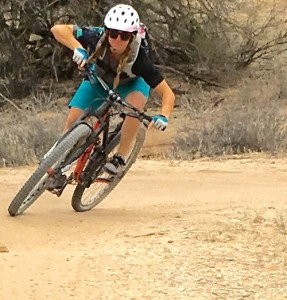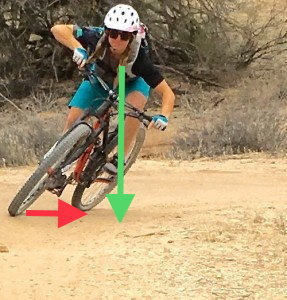What do you mean I got my head handed to me? I thought you realized your mistake and we moved on after you admitted it? You're now saying you won? Here is the exact quote of you admitting your mistake. I thought I was being gracious. Next time you prefer for me to kick you a few times after you are down to make it sink in and ensure you're able to remember? What the hell??? Hello???
I edited my post to remove that comment. I shouldnít have said it and I apologize.
On the other hand, I never admitted the mistake you think I made. That quote isnít admitting anything other than your comparisons are not equal. I really donít want to go back over that ground but
when comparing equal conditions pulse braking results in cooler rims than drag braking. In some instances, pulse braking is even going to result in cooler rims when the conditions arenít equal. The same canít be said for drag braking unless the conditions are widely different.
Yes, your rims do in fact deflect over 5mm side to side with only hand pressure. I asked you to go to your bike and try it. Did you try it? No you didn't. I know you didn't try it because if you did you wouldn't be talking. If you don't know metric units, take a ruler with you. Yes, bike wheels are in fact surprisingly flexible laterally.
Iíve said that wheels are flexible laterallyÖthatís the whole point of bring up the lateral force, which you say doesnít exist. However, when you flex the wheel by hand you are flexing it at the point where you are putting pressure on it. You arenít flexing the entire rim out of plane. The spokes keep the part of the rim where there is no pressure straight. Leaning the bike over in a curve
will not result the rim bending at the brake surface. Only the part of the wheel in contact with the ground will flex sideways.
I will point out that you were saying above that there is no lateral flex in the rim. Which is it? The bike has lateral flex or it doesnít?
Yes, I know how to build wheels properly. I've seen you in the touring forum so you know I'm an expedition tourist: off road Mongolia Gobi Desert, Central Asia Silk Road, Burma, etc. The worst roads in the world with full expedition loads. I've been building wheels for a very long time. I worked in a bike shop during college. I don't mind if you question other stuff but please don't start with this ******** about wheel building. You can't build a better wheel than me. Just end it right there.
Iíve been building wheels for a long time as well. I know a lot about building them and even teach other people how to build them. You donít know if I can build a better wheel than you just as I canít know if you build a better wheel than I do. But I
do know a lot about wheel building and wheel dynamics.
Yes, if your center of gravity is not in plane with the bike it is possible to have a sideways force on the wheel. But as I said in my previous post this would not be riding your bicycle properly.
Itís called cornering. Iím pretty sure that you corner from time to time which hangs the CG out of plane with the contact patch.
Do you actually ride like this? When you are riding straight, do you have your bike canted to one side and your body leaning to the other side? When you are cornering, are you doing some motocross style body dip where you throw your ass off the inside of the bike? Or are you one of those people who corner by leaning the bike over but keep their body upright?
When riding in a straight line, no I donít cant the bike to one side or the other. If Iím pedaling out of the saddle, I throw the bike from one side to the other but my CG is generally vertical. When I corner, I lean into the corner, away from the contact patch. Now think about that. Where is the CG in that case? Gravity is pulling the CG down and the CG is out of plane with the contact patch. The vector force is angled through the CG but the normal force is still acting on the CG which is a long ways from the contact patch. The only thing keeping the CG from dropping to the ground is the friction of the tires and the lateral force they put on the wheels. This cantilevering of the CG is also what is causing the relatively weak rims to bend out of plane with the axle.
To whoever is reading this and is learning to ride a bike, don't do that. Always keep a straight tuck around a high speed corner. By the time you actually need these extremely niche bike leaning techniques for berm and off camber mountain bike turns, you're already too advanced to be reading this crap on Bike Forums.

Look at that picture again. Where is the CG in relation to the contact patch?
Let us refocus and come back to the point: my original response was to your claim above that the lateral force on a wheel during a turn is far more than the wheel bending force during a crash. Believe me, any lateral force you manage to moto-dip with your ass onto the wheel is not greater than the rim bending force in a crash.
Yes, letís refocus. Letís look at what happens in a slide out crash as an example. And Iíll use your picture for illustration.

Gravity is acting on the CG pulling it down. As the rider leans into the corner, the lateral force on the tires is pushing towards the CG. The lateral force is a fraction of the normal force but still enough to case some flexing of the rim out of the plane of the wheel. Now lets say the rider leans over further to the point where the friction on the tires no longer can hold the bike in the corner. The lateral force on the wheels eventually fails and the wheels slide out from under the rider.

When the friction fails the only force acting on the bike is the normal force and the CG goes into free fall (well, close enough). The lateral force on the wheels goes to zero and the wheels are no longer being bent out of plane. The CG eventually hits the ground but the force on the wheels is zero. There is no force on the wheels to ďbendĒ them.
If the wheels happened to be trapped so that they canít slide, bending the wheel would be possible but thatís different from sliding out on a corner.
No matter how large your ass is and no matter how poor your riding technique is.
I have been nothing but respectful towards you. I do not hurl insults nor attack you personally. I expect the same from you.
When you have managed to bend a wheel purely by cornering too hard, then return here and report back in to us. In the meantime please stop with these patently wrong false-confidence statements.
I wonít have to report back because it doesnít happen. I can envision some instances where a wheel
could be bent in a crashÖwheel trapped in something, for exampleÖbut bending a wheel simply by ďcornering too hardĒ is never going to bend a wheel that is properly built.